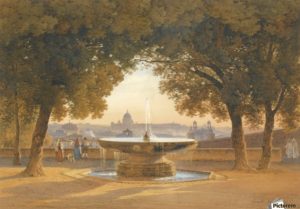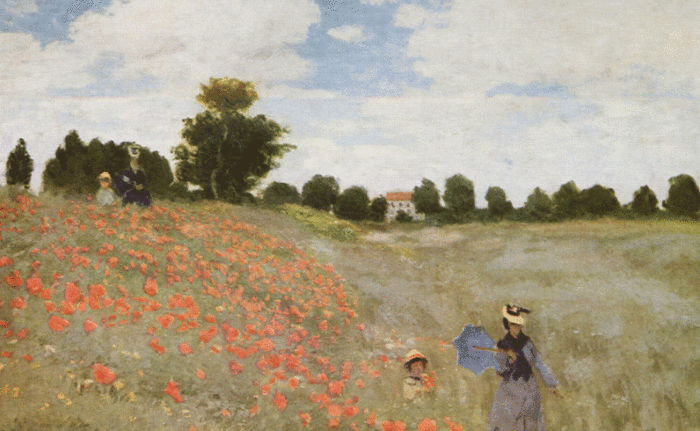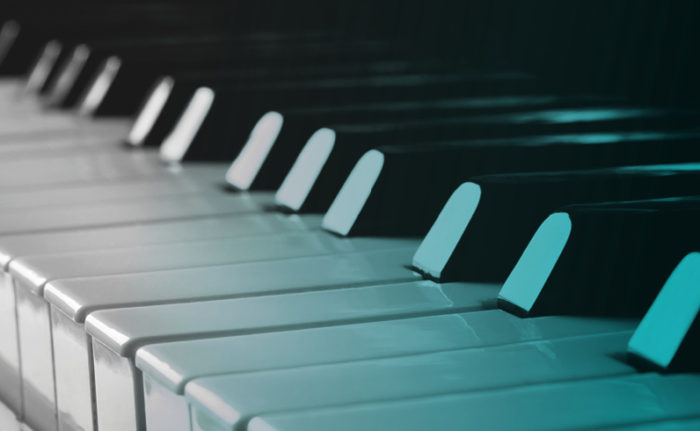On January 9, 11, and 12, the Houston Symphony presents Paganini + “Pines of Rome,” a delightful all-Italian program. In this post, learn how Respighi’s Fountains of Rome gave the composer his “big break” with its imaginative musical depictions of Rome’s iconic fountains.

Soon after moving to Rome in 1913, Respighi made the acquaintance of two blond, Latvian sisters who were students there. They lived in the Valle Giulia, a low-lying area just northwest of the Borghese Gardens. “Near their little house, which was lonely and remote at that time, one could always hear the murmuring of a fountain,” Respighi recalled. “Listen—how it sings!” one of the young women exclaimed. “That was the first of The Fountains of Rome,” Respighi said.
Though this initial inspiration came in 1913, most of the work on the piece would be done in 1915–16; Respighi noted that his compositions often gradually coalesced in his mind until they were ready to be written down. In March 1917, the first performance met with a cool reception; dispirited, Respighi put the score away in a drawer. He only took it out when great conductor Toscanini requested a new work to conduct and no other pieces were ready. At Toscanini’s February 1918 performance, the piece became Respighi’s greatest success yet and made him famous the world over.
The Music
In the published score, Respighi provided his own illustrative notes for the piece: “In this symphonic poem the composer has endeavored to give expression to the sentiments and vision suggested to him by four of Rome’s fountains contemplated at the hour in which their character is most in harmony with the surrounding landscape, or in which their beauty appears most impressive to the observer.
“The first part of the poem, inspired by the fountain of Valle Giulia [most likely this one], depicts a pastoral landscape: droves of cattle pass and disappear in the fresh damp mists of a roman dawn.” Imitating a shepherd’s shawm, the oboe introduces a bucolic theme that is passed among the woodwinds:
Later, the oboe doubles a solo cello for a warmer, contrasting theme. Begun by the flute, a brief reprise of the first theme leads to the next section of the piece.
“A sudden loud and insistent blast of horns above the whole orchestra introduces the second part ‘The Triton Fountain.’ It is like a joyous call, summoning troops of naiads and tritons, who come running up, pursuing each other and mingling in a frenzied dance between the jets of water.” After the “blast of horns,” a playfully noisy introduction leads to a light, scherzando theme in the flutes, which is developed with orchestral colors that seem to reflect the glint of the morning sunlight.

“Next there appears a solemn theme [in the trumpets and trombones] borne on the undulations of the orchestra. It is the fountain of Trevi at mid-day.” Though this is purportedly a depiction of a fountain, the music seems closer a vast seascape: the orchestra vividly conjures images of crashing waves. “The solemn theme, passing from the wood to the brass instruments, assumes a triumphal character. Trumpets peal: across the radiant surface of the water there passes Neptune’s chariot drawn by sea-horses, and followed by a train of sirens and tritons. The procession then vanishes while faint trumpet blasts resound in the distance.”
“The fourth part ‘The Villa Medici Fountain’ is announced by a sad theme [in the flute and English horn] which rises above a subdued warbling. It is the nostalgic hour of sunset.” Delicate harps and celesta accompany the scene: “The air is full of the sound of tolling bells, birds twittering, leaves rustling.” A sweet, melancholy violin solo leads to a passage that illustrates the “birds twittering” and “leaves rustling” with evocative woodwind and string solos. The flutes and piccolo depict drops of water above a reprise of the “sad theme” in the violins. “Then,” as a distant bell tolls, “all dies peacefully into the silence of the night.” —Calvin Dotsey
Don’t miss Paganini + “Pines of Rome” on January 9, 11, and 12! Learn more & get tickets.



